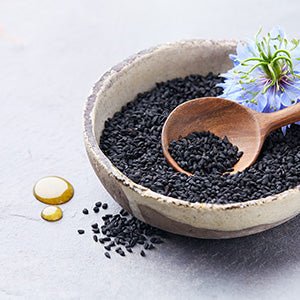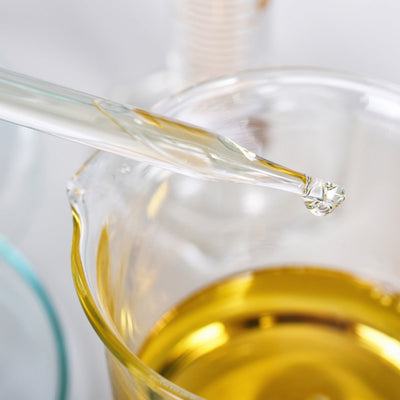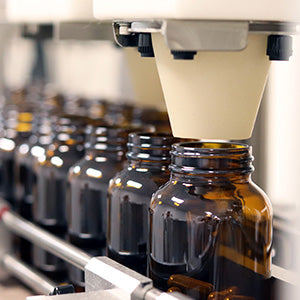Laxative Side Effects & Safety: Everything You Need to Know

Constipation causes discomfort and it can lead to embarrassing gas and uncomfortable bloating. Laxatives, which help evacuate stool from the bowels, are the go-to solution for most people dealing with constipation. Effective as that may be, some laxatives have mild to severe side effects, especially with long-term use. Side effects range from diarrhea, cramping, and rectal irritation to confusion and heart palpitations.
There are six types of laxatives with different mechanisms of action, timing, and side effects. The types include osmotic laxatives, stool softeners, bulk-forming laxatives, suppositories (See Types of Laxatives below). Some laxative brands include a combination of types. Below I detail the types of laxatives, how they work, how long it takes them to get the desired effect, and side effects specific to that type.
Are Laxatives Safe?
Occasional use of laxatives of all types has been deemed safe by several scientific studies.[1] Relatively minor side effects may occur from using laxatives, as well as some extremely uncommon but serious side effects. Stimulant laxatives are considered the most harmful type of laxative. Regular use of stimulant laxatives can damage surface epithelial (skin) cells that line the rectum, and physicians will also see darkened skin along the colon in colonoscopy patients who have use herbal stimulant laxatives; however, the functional health consequences of these issues is unclear.[1]
Occasional use of laxatives is generally safe, but you may experience minor side effects, including gas, bloating, and cramping. Serious side effects are most common with stimulant laxatives.
There are contrasting scientific opinions on whether stimulant laxatives are linked to tumor growth in the colon. The chemical phenolphthalein was voluntarily removed from most products after the U.S. Food & Drug Administration (FDA) deemed it “not generally recognized as safe” in 1999 when studies linked it to kidney, ovary, and blood cancers. Some lab and animal studies found that other stimulant laxatives may cause tumor growth, but human epidemiological studies – which correlate disease risk in human populations with laxative use – have so far failed to find a clear connection.[2, 3] There is also not strong evidence that occasional laxative use causes structural or functional damage of intestinal nerves or smooth muscle.[3]
Common Side Effects of Laxatives
The most common and relatively minor side effects that go along with laxative use include cramping, nausea, gas, and minor irritations or rashes. Some people may feel bloated before passing the stool, especially with bulk-forming laxatives. Dehydration can occur, especially when laxatives cause loose stools, so make sure to drink plenty of water. Dehydration goes along with weakness and fatigue, so these symptoms may indicate a need to drink up. People using laxatives also may experience rectal discomfort from expelling their fecal matter quickly, especially if it is very loose and watery.
Rare But Serious Side Effects of Laxatives
As mentioned above, stimulant laxatives cause the most severe side effects. An Italian study conducted over eight years found that herbal stimulants including licorice, dandelion root, and anthraquinone-containing plants like Senna, may cause severe gastrointestinal, skin, and kidney disorders as well as some severe allergic reactions in some individuals.[4] Bulk-containing laxatives, particularly those containing psyllium, may also cause allergic reactions in some people. Osmotic laxatives that contain large poorly absorbed ions like magnesium or phosphate can create concerns with metabolism, especially in people with kidney damage.
| Type | Method of Action | Time to Work | Serious Side Effects | Mild Side Effects |
|---|---|---|---|---|
| Stimulant | Stimulate muscle contractions in digestive tract | 6-12 hours | Irregular heartbeat, rash, severe cramps, allergy, kidney disorders | Belching, nausea, diarrhea, discolored urine, weakness |
| Emollient/stool softener | Add moisture to stool | 12-72 hours | Electrolyte imbalance with prolonged use, rash | Throat irritation (liquid forms), stomach cramps |
| Lubricant | Lubricate the stool with oil, making it easier to pass | 6-8 hours | Interference with absorbing fat-soluble vitamins | Skin irritation around rectum |
| Bulk-forming | Fiber bulks up the stool, causing the intestinal walls to contract | 12-72 hours | Difficulty breathing or swallowing, rash, intestinal blockage | Dehydration, cramping, bloating |
| Saline/Osmotic | Draw water into the colon, leading to loose stool | 30 min-6 hours | Severe dehydration, dizziness, irregular heartbeat | Mild dehydration, increased thirst, gas, nausea |
| Suppositories | Can be stimulant (e.g. bisacodyl) or osmotic (e.g. glycerine) | 2-60 min | Body weakness, severe cramping | Mild cramping, diarrhea |
Laxative Abuse & Dependency
Negative outcomes are especially likely when laxative use turns into laxative abuse. Laxatives are not an effective way to lose weight, yet some people misuse them with that intent. It’s an ineffective measure since only water weight is lost. An article in the Journal of the International Society of Sports Nutrition Methods considered using laxatives for weight loss as dangerous.[3]
Laxatives & Interactions With Other Medications
Laxatives may interact with other medications. This interaction does not necessarily mean that you cannot use two medications simultaneously, but you should consult your healthcare provider for specific advice. Drugs that may interact with laxatives include the heart medication digoxin, the blood thinner warfarin, birth control pills (oral contraceptives), the hormone estradiol, blood pressure medications, antacids, heartburn medications, H-2 agonists, diuretics, corticosteroids, and proton pump inhibitors. These medications typically have interactions with specific laxative ingredients, rather than with all the types of laxatives. For example, digoxin interacts with magnesium sulfate (Epsom salt) which is an osmotic laxative, but not others. You can do further research on these medications if you take any of them, or ask your physician.
Avoid Laxatives If You Have Certain Conditions
People with certain conditions should avoid laxatives altogether. Since some types of laxatives, especially osmotic laxatives, draw water from your body into the stool, you should avoid these and other laxatives if you are severely dehydrated. You should also avoid laxatives if you have or suspect an intestinal blockage. Individuals who have the rare inherited conditions known as galactosemia and fructose intolerance should not take laxatives that contain lactulose-containing osmotic laxatives. Patients with kidney conditions are also advised to consult their doctors before taking laxatives.[5]
Precautions for Women
Because of changes in hormones and – especially in the third trimester – the pressure that the growing fetus exerts on the digestive system, pregnant women often experience constipation.
What Are the Safest Laxatives While Pregnant?
The best option to reduce constipation during pregnancy, as with other times, involves eating a fiber-rich diet full of raw, fresh fruits and vegetables. Drink a lot of water to avoid dehydration-related constipation. But if you really need to get things moving, try our do-it-yourself prune juice recipe, and talk to your healthcare provider for your best options.
What Are the Safest Laxatives While Breastfeeding?
When you are breastfeeding an infant, care must be taken with medication because it may pass into the breast milk. Always talk to your healthcare provider before deciding on any medication, but most agree that the best bet is also an emollient laxative (stool softener), followed by bulk-forming laxatives. Be careful to drink extra water when taking a laxative or you may end up producing less breast milk.
Types of Laxatives
Several types of laxatives exist, with different mechanisms of action. Our article on the best instant laxative for quick relief covers each of these in more detail. Many over-the-counter laxatives contain more than one chemical with different actions.
- Stimulant Laxatives
- Emollient Laxatives & Stool Softeners
- Lubricant Laxatives
- Bulk-Forming Laxatives
- Saline & Osmotic Laxatives
- Suppository Laxatives
Stimulant Laxatives
Stimulant laxatives stimulate nerves in the digestive tract, causing rhythmic contractions in the intestinal muscles which induces a bowel movement. They work within 6 to 12 hours of consumption and have the most serious side effects of all laxatives. Manufacturers voluntarily removed stimulant chemicals used in popular brands after the U.S. Food & Drug Administration (FDA) deemed them “not generally recognized as safe and effective” in 1999. Herbal stimulant laxatives also may damage and discolor the intestinal wall.
Emollient Laxatives & Stool Softeners
Emollient laxatives, also called stool softeners, are the safest, yet slowest-acting laxative. As such, they are sometimes recommended for children. They can take up to three days to work, however. As the name indicates, they soften the stool, making it easier to pass.
Lubricant Laxatives
Lubricant laxatives typically contain mineral oil, which lines the colon, allowing the stool to slip out more easily. They typically come in the form of a mineral oil enema, but can also be a pill taken orally.
Bulk-Forming Laxatives
Bulk-forming laxatives contain fiber-based substances like psyllium that bulk up the stool, creating a slippery gelatinous mass that mixes into the fecal matter. The added bulk pushes on the intestinal wall, which causes the muscles to contract, helping to push the stool through. Studies have found some health dangers from bulk-forming laxatives, including dehydration and allergies.
Saline & Osmotic Laxatives
Saline and osmotic, sometimes called hyperosmotic, laxatives work by drawing water from the body into the colon, and hence into the stool, which creates a softer, often watery stool that can easily pass from the body. They take between 30 minutes to 6 hours to work. Osmotic laxatives can contain a variety of different ions, from the very large polyethylene glycol (PEG) to sugar-based sorbitol and lactulose, to the salt-based sodium phosphate and magnesium citrate. They carry a risk of electrolyte imbalances, and so must be used carefully.
Suppository Laxatives
Suppositories are small devices or pills filled with a laxative substance that you insert directly into the rectum. They act the quickest, usually within 2 to 15 minutes but sometimes up to one hour. They generally have few side effects. Medical professionals may also prescribe a relatively new form of carbon dioxide-releasing suppository. These suppositories employ potassium bitartrate and sodium bicarbonate which create carbon dioxide gas in the bowel, which, in turn, pushes against the colon wall, stimulating peristalsis – the muscular contraction of the intestines. Carbon dioxide-producing suppositories may be safely used by people at risk of electrolyte imbalances or dehydration.
Best Alternatives to Laxatives
If you struggle with ongoing constipation, you may benefit from making lifestyle and diet changes. Eat a more nutritious diet, including a bountiful supply of foods high in fiber. Many foods stimulate your GI tract, acting as laxative foods for natural constipation relief; these not only include prunes, but also ginger, apple cider vinegar, and magnesium-rich green leafy vegetables. Switching away from animal-based foods to a vegan or vegetarian diet can improve your digestion. Exercising can also relieve minor constipation; by getting your blood pumping through your body, exercise also helps move the bowels.
The best solution for constipation involves changing your diet and lifestyle. Eat more fiber-rich fruits and vegetables, drink more water, exercise, and take appropriate nutritional supplements.
Certain supplements can also improve your overall digestion and help normalize occasional or regular constipation. Studies have found that constipation responds well to probiotics.[6] Lactobacillus and Bifidobacterium, in particular, have been shown to encourage healthy bowels.[7]
Another way to improve digestion and reduce constipation involves performing a cleanse. If you want to a quick and safe way to cleanse the accumulated toxins from your colon and improve your overall digestion, I recommend Oxy-Powder®, an all-natural, vegan, ozonated-magnesium intestinal cleanser.
Your Story
Have you tried any of these laxatives, or tried changing your diet and lifestyle to reduce constipation? How did they affect you? Have you tried Oxy-powder? Tell us your story!
References (7)
- Müller-Lissner S. "Side effects of laxatives." Z Gastroenterol. 1992;30(6),418-27.
- Xing JH, Soffer EE. "Adverse effects of laxatives." Dis Colon Rectum. 2001;44(8),1201-9.
- Wald A. "Is chronic use of stimulant laxatives harmful to the colon?" J Clin Gastroenterol. 2003;36(5),386-9.
- Vitalone A, et al. "Surveillance of suspected adverse reactions to herbal products used as laxatives." Eur J Clin Pharmacol. 2012;68(3),231-8.
- "Relieving Constipation." American Association of Kidney Patients. Mar. 2013. Accessed 5 Jul. 2018.
- Bengmark S. "Ecological control of the gastrointestinal tract. The role of probiotic flora." Gut. 1998;42(1),2-7.
- Biradar S. et al. "Probiotics And Antibiotics: A Brief Overview." The Internet Journal of Nutrition and Wellness. 2004; 2(1),1-6.
†Results may vary. Information and statements made are for education purposes and are not intended to replace the advice of your doctor. If you have a severe medical condition or health concern, see your physician.

Dr. Edward Group, DC
FOUNDER | HEALER | ADVOCATEDr. Group, DC is a healer and alternative health advocate, and an industry leader and innovator in the field of natural health who is dedicated to helping others. He is a registered doctor of chiropractic (DC), a naturopathic practitioner (NP), and proud alum of Harvard Business School and MIT Sloan School of Management. Dr. Group, DC is the founder of Global Healing – a mission and vision he has shared through best-selling books and frequent media appearances. He aims to spread his message of positivity, hope, and wellness throughout the world.










